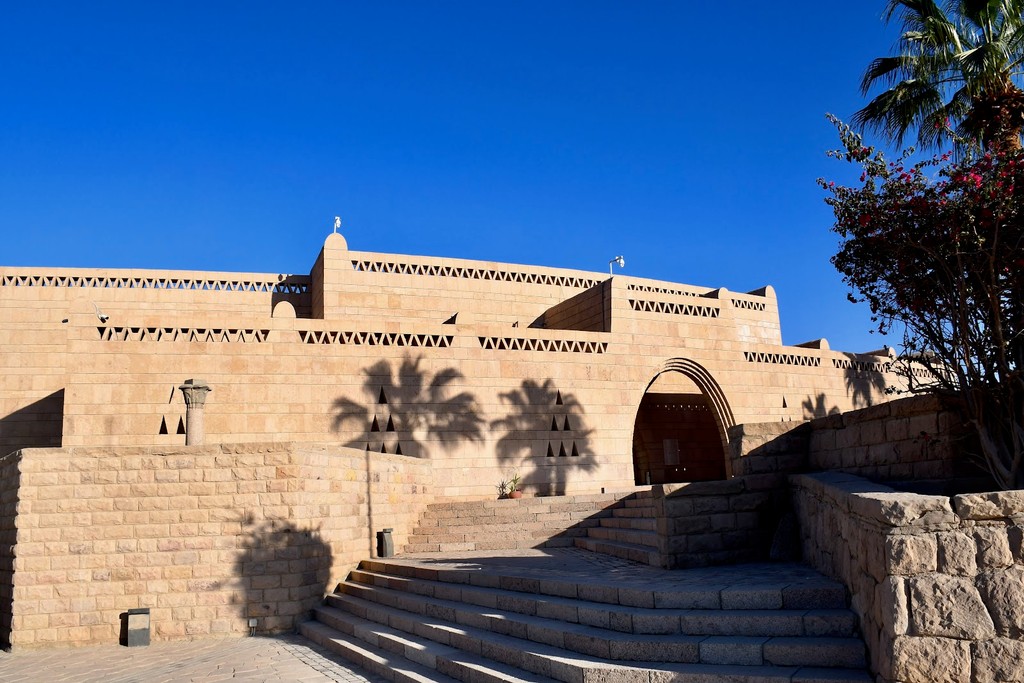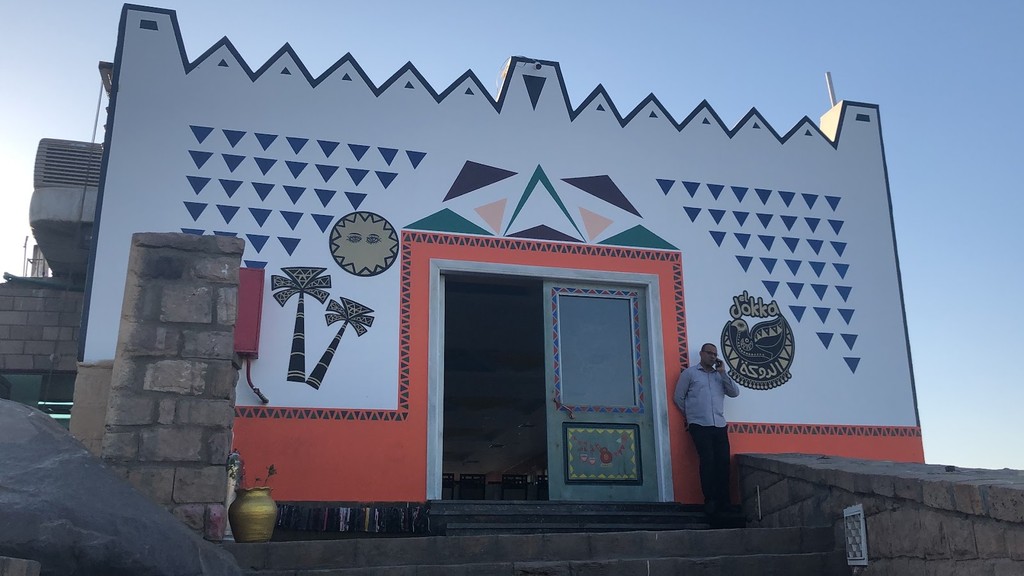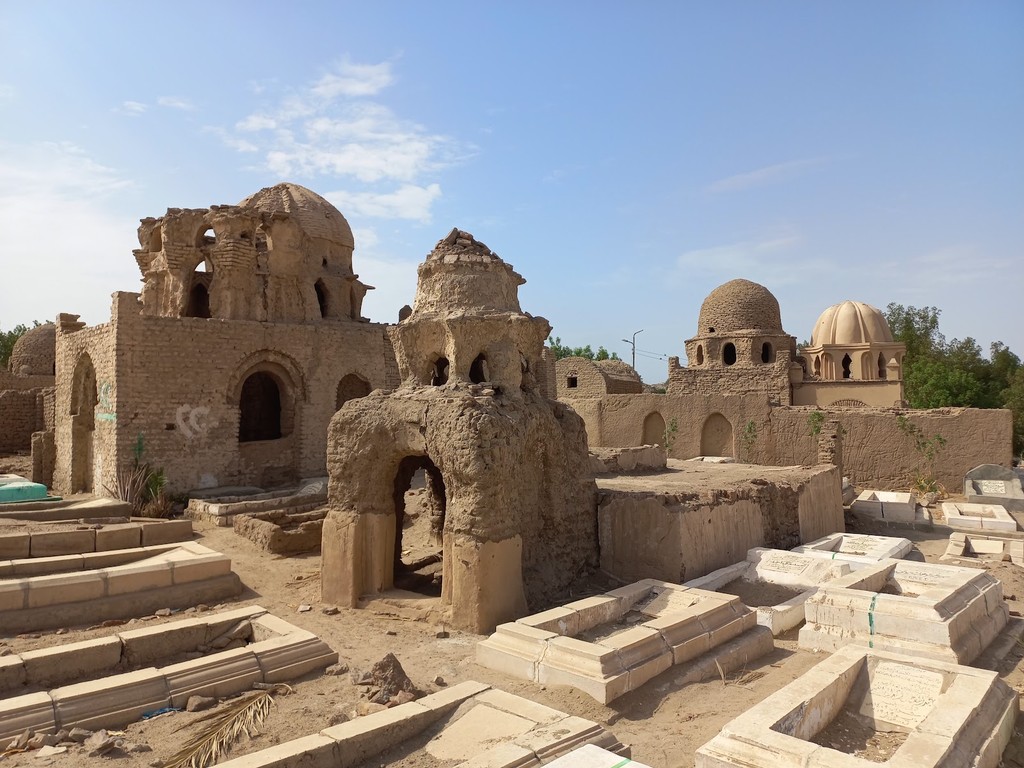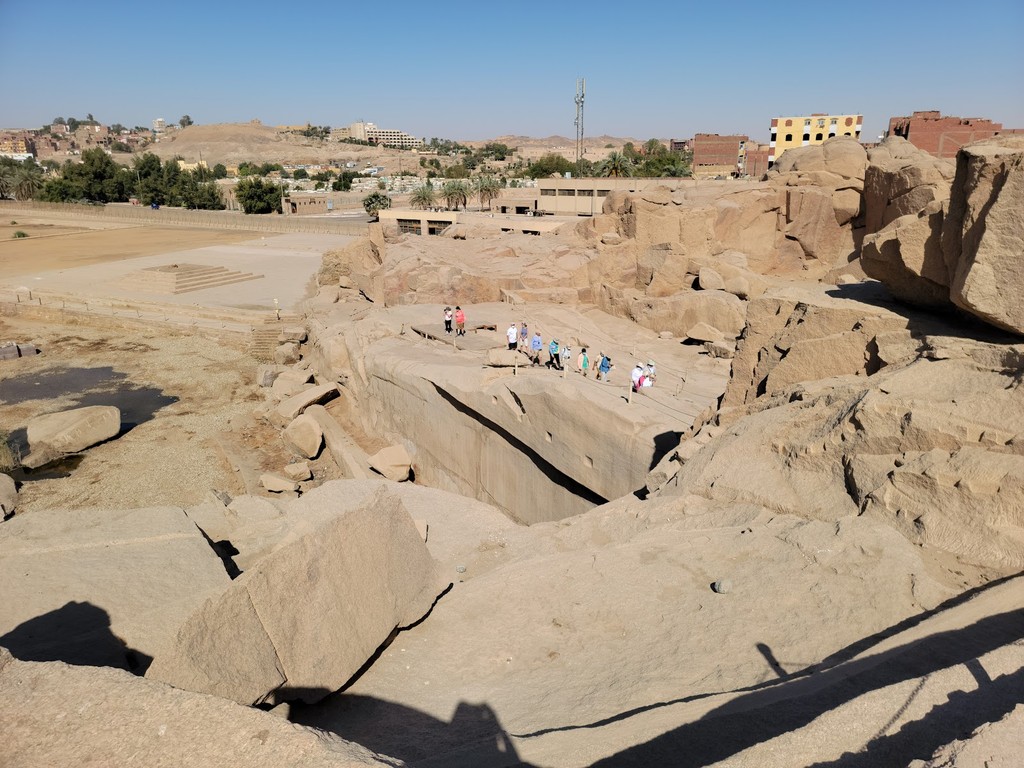Nubian Treasures: Aswan's Hidden Gems
Join us for a captivating جولة لمدة ساعتين exploring Aswan's rich heritage. Discover the stories behind ancient landmarks and immerse yourself in local culture during this free walking tour.
Time
3 Hours
Stops
4 Places
Distance
2.7 km
Nubian Museum
Start your tour at the Nubian Museum, which showcases the rich history and culture of the Nubian people through an extensive collection of artifacts and exhibits.

Nubian Museum (Source: Google Maps)
The Nubian Museum in Aswan is a cultural treasure trove dedicated to the history and heritage of the Nubian people. Opened in 1997, it was established to preserve the rich legacy of Nubia, a region that has been historically significant due to its location along the Nile River. The museum houses an extensive collection of artifacts, including ancient jewelry, pottery, and sculptures that date back thousands of years. Its architecture reflects Nubian styles, featuring domes and colorful murals that echo the vibrant culture of the Nubian people. The museum not only serves as a repository of artifacts but also as a center for educational programs that promote Nubian culture and history. Visitors can explore various exhibits that narrate the struggles and triumphs of the Nubian people, particularly in the context of the construction of the Aswan High Dam, which led to the displacement of many Nubians. The museum is an essential stop for anyone looking to understand the deep-rooted traditions and contributions of Nubia to ancient and modern Egypt.
El Dokka Restaurant
Enjoy a meal at El Dokka Restaurant, situated on the banks of the Nile, offering traditional Egyptian cuisine with a beautiful river view.

El Dokka Restaurant (Source: Google Maps)
Fatimid Cemetery
A short walk from the Nubian Museum, the Fatimid Cemetery offers a glimpse into the Islamic architecture and burial practices of the Fatimid period.

Fatimid Cemetery (Source: Google Maps)
Located near the Nubian Museum, the Fatimid Cemetery is a remarkable site that reflects the rich Islamic architectural heritage of the Fatimid period, which lasted from the 10th to the 12th centuries. This cemetery is notable for its unique tomb designs, which showcase intricate stone carvings and inscriptions that are characteristic of Islamic funerary art. The Fatimid dynasty was known for its cultural and intellectual advancements, and the cemetery serves as a testament to their architectural prowess. Visitors to the cemetery can observe the layout of the graves, often adorned with elaborate decorations that symbolize the beliefs and values of the time. The site provides insight into the burial practices of the Fatimid era, where the deceased were often interred with personal belongings and inscriptions that tell their life stories. The Fatimid Cemetery is not only a resting place for the deceased but also a historical site that offers a glimpse into the past, making it a significant stop for those interested in Islamic history and architecture.
Unfinished Obelisk
Explore the ancient quarry site of the Unfinished Obelisk to understand ancient Egyptian stone-working techniques and the scale of their monumental projects.

Unfinished Obelisk (Source: Google Maps)
The Unfinished Obelisk is an ancient quarry site located in Aswan, where visitors can witness the incredible scale of ancient Egyptian stone-working techniques. This obelisk, if completed, would have stood as the tallest in Egypt, measuring approximately 41.75 meters (137 feet) and weighing around 1,200 tons. The site dates back to the reign of Hatshepsut, one of the few female pharaohs in ancient Egypt, who commissioned the obelisk to be erected in her honor. The Unfinished Obelisk provides a unique opportunity to observe the methods used by ancient Egyptians to carve and transport massive stone structures. The quarry’s walls are marked with the tools and techniques that were employed, including the use of copper chisels and wooden wedges. Interestingly, the obelisk was abandoned due to a crack that developed during its carving, which highlights the challenges faced by ancient builders. Today, the site is not only an archaeological wonder but also a testament to the ingenuity and determination of the ancient Egyptians, making it a must-visit for anyone interested in the engineering marvels of the past.

Your travels, your rules.
Create your own Free Walking Tours.
Set your preferences, distances and anything you want to do or see.
Completely free, no payment required.